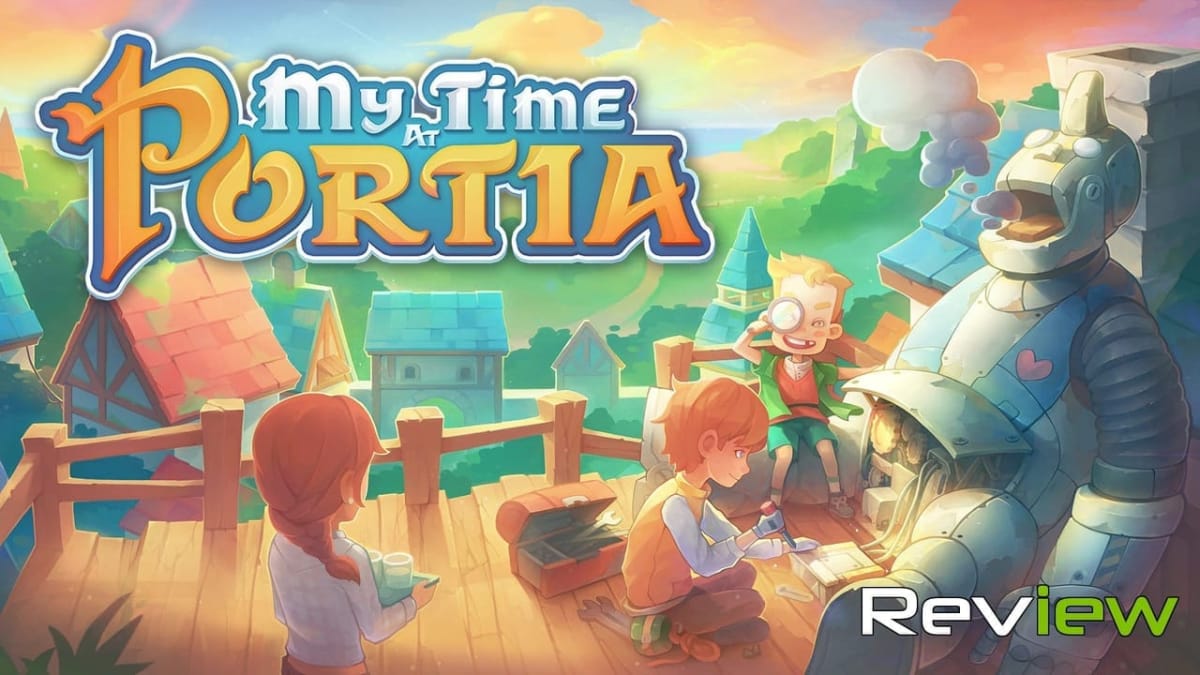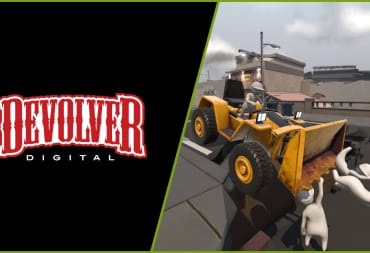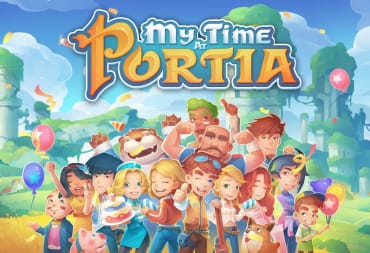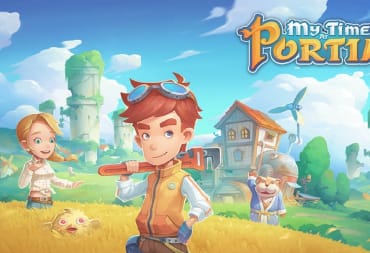The relaxing farm simulator genre has long been championed by Harvest Moon and Animal Crossing, with Stardew Valley most recently staking its claim on the market. My Time at Portia is the newest title trying to make a name for itself in the field. For the most part, it succeeds at being a worthy contender, offering a robust variety of activities that can fill hours of time. To put it simply, Pathea’s newest project does many things fairly well, but nothing feels perfect. However, the delicate balance found at the center of all these aspects makes My Time at Portia an unexpectedly addicting game. While there’s a surprising amount of overarching narrative, all of it complements the quaint yet picturesque virtual lifestyle.
Disarmingly charming
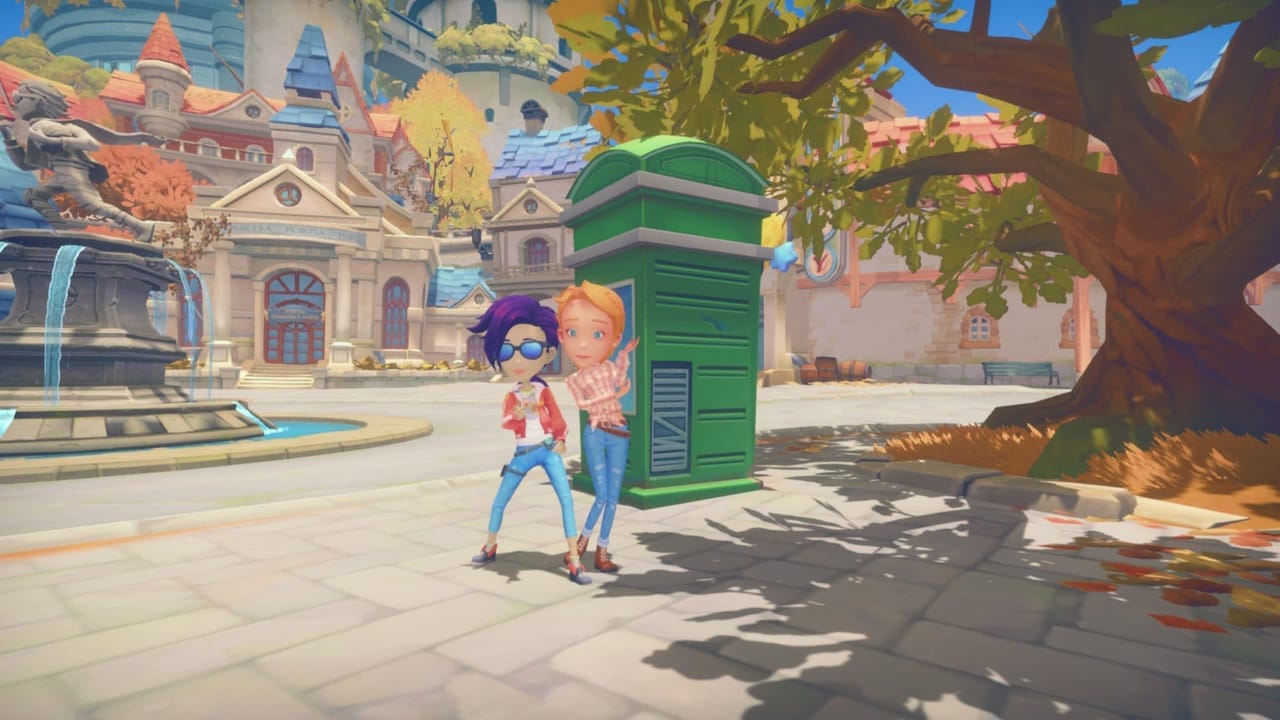
In my first moments with My Time at Portia, its artistic direction struck me. The town of Portia somehow feels both rustic and modern. The architectural design features concrete, bricks, and windows, with NPC homes adding a splash of wood to the town’s palette. Many shop owners live right next to their store, and some leave their wares out on display, giving the town a vibrant market air. If you need to pick up a couple things, just take a stroll down Main Street and peruse the Central Plaza. Along the way, say hello to your favorite townsfolk. Maybe gift them a pumpkin because you grew 200 in the summer and still don’t know what to do with them. Soon, you’ll feel at home, and you might even call some of the NPCs friends.
The townsfolk are easily the best part of My Time at Portia. Their character designs catch your eye, and one look at them gives you an idea of their personality. Despite how different they all are, the NPCs all feel like they belong, each with their own distinct purpose. For example, Mayor Gale leads the town, while his son Gust makes a living as an accomplished architectural designer. Meanwhile, they both worry about Ginger, the sickly younger daughter who tries her best to not be a burden on others. I could go on describing the townsfolk because they’re all equally as wholesome and lovable, but to put it simply, it’s easy to resonate with at least a few people in town. In fact, the social facet of My Time at Portia continued to impress me the more I played.
Nevertheless, the game isn’t without its flaws. Most characters are voice acted, and while it’s admittedly amateur, it adds a certain charm to some of the characters. Unfortunately, some of the behind-the-scenes work with the voice lines need some help, with characters frequently dropping a voice line mid-speech. Across the board, the volume for the voices isn’t normalized, meaning some characters speak far louder than others. Still, when the voice acting comes through, it helps build a sense of immersion in the small town of Portia.
Playing the New Builder on the Block
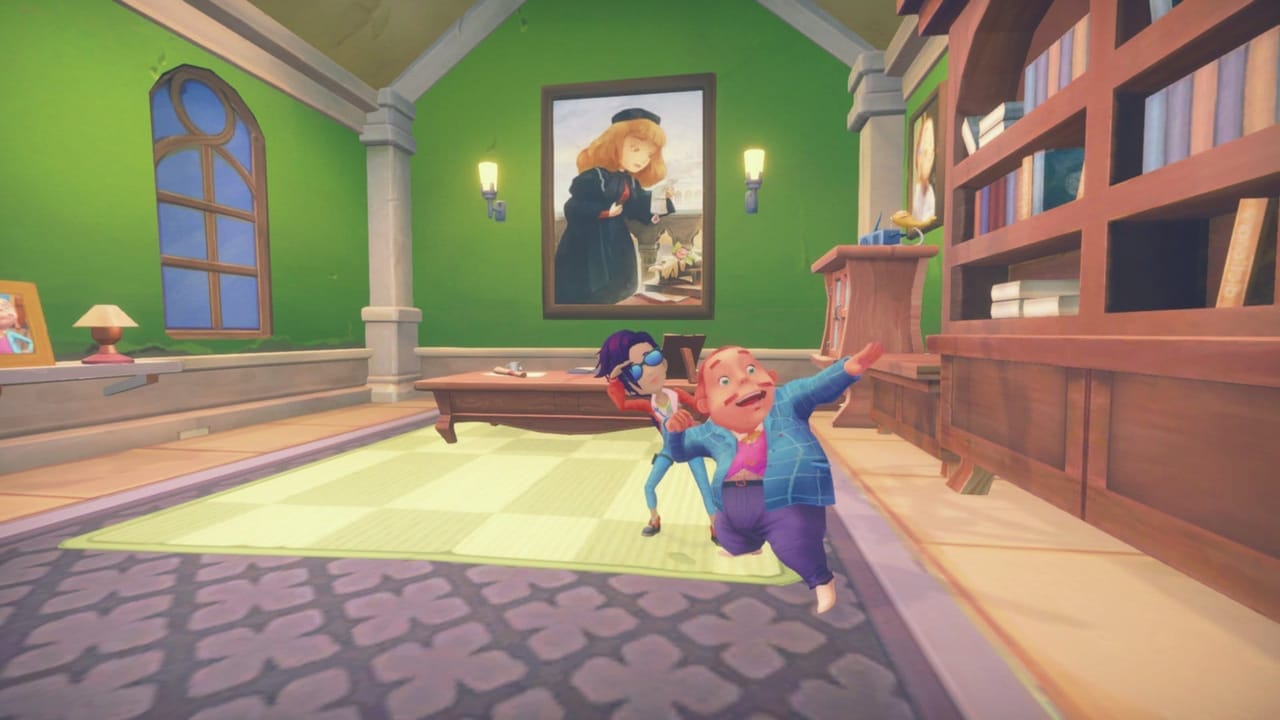
Players are believably eased into the Portia lifestyle because the character they embody is, of course, new to town. You’re tasked with taking over your Pa’s workshop, as is customary in games of this ilk. Thus, while building different contraptions by assignment in your workshop, you’re thrust into Portia’s pre-existing social network. The Portians already know each other, but they don’t know you.
You befriend people by talking to them and giving them gifts. The more you learn about someone, the more you know about what they like or hate — or alternatively, you can look that up in the wiki, which is already pretty fleshed out. What makes My Time at Portia’s social aspect stand out, however, is that once you reach a new friendship rank with someone, you gain a boost to your relationships with their friends too.
For example, take Gale, Gust, and Ginger, the family I mentioned earlier. Let’s say you hit it off well with Gust, and you reach friendship rank one with him. Now you’ll have an easier time befriending his dad and sister (and his family’s butler!) because they all get a boost in their relationship meters. The cascading friendship system is a novel concept that brings Portia to life, uniquely reflecting an aspect of real-world social conduct.
Beyond the innovative system, My Time at Portia bridges the gap between crafting and socializing in a satisfying way. A majority of what you do in the game involves gathering resources and crafting items. Crafting is a nested system — build a furnace to smelt ores so you can build a better furnace, and so on. Often, townspeople will commission you to craft certain items, and this is where the genius lies. Delivering the goods on time leads to a boost in your relationship with the commissioner. This means your social standing inherently benefits from your crafting skills. Unfortunately, even with these extra ways to build friendships, I found that it takes an absurdly long time to forge bonds with people, even through daily interactions.
Repercussions of Romantic Relationships
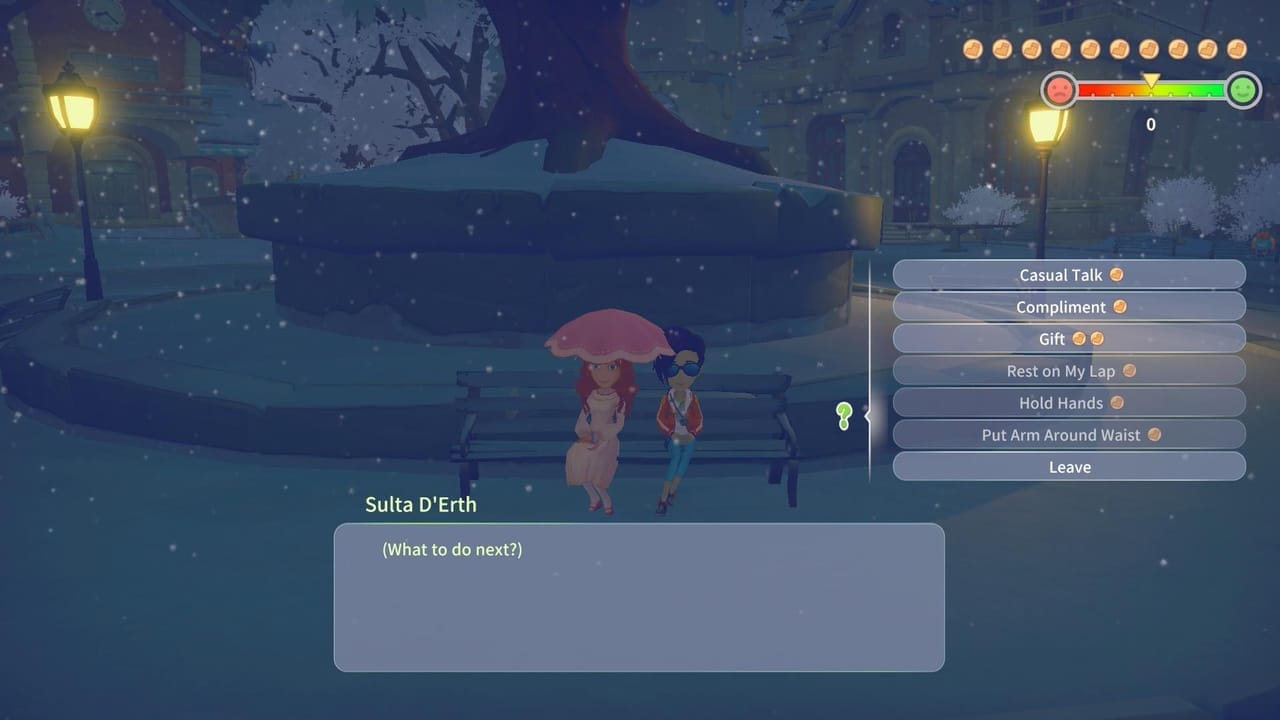
Once you gain two friendship ranks with a character, you can invite them to play dates. They’re partly a minigame, partly a visual novel, where dialogue choices can affect how well the event goes. Above all, play dates make for a good way to learn more about the characters you like.
But let’s talk about the characters you really like. The friendship system lends itself to romance in My Time at Portia. You can confess to your sweetheart, and if your friendship is high enough, you’ll become partners. Afterward, play dates turn into dates, and a few more options open up, typically meaning more physically intimate actions. Dating someone never really affects your work as a builder, but the mechanics are satisfying enough. Additionally, once married, your partner actually does help your work as a builder, with each prospective lover offering a specific bonus after they move in.
I’ve found that romance also affects characters close to your beloved, which was impressive to see. For example, the grandmother of my lover-to-be disapproved of the relationship. In response, my character had to tend to the grandmother’s field daily to prove a point. Again, this all ties into Portia being a believably alive town that responds to your actions. And it’s worth noting that among all the eligible bachelors and bachelorettes, all of them are open to relationships with men and women, which is pleasantly progressive.
The Struggle for Resources
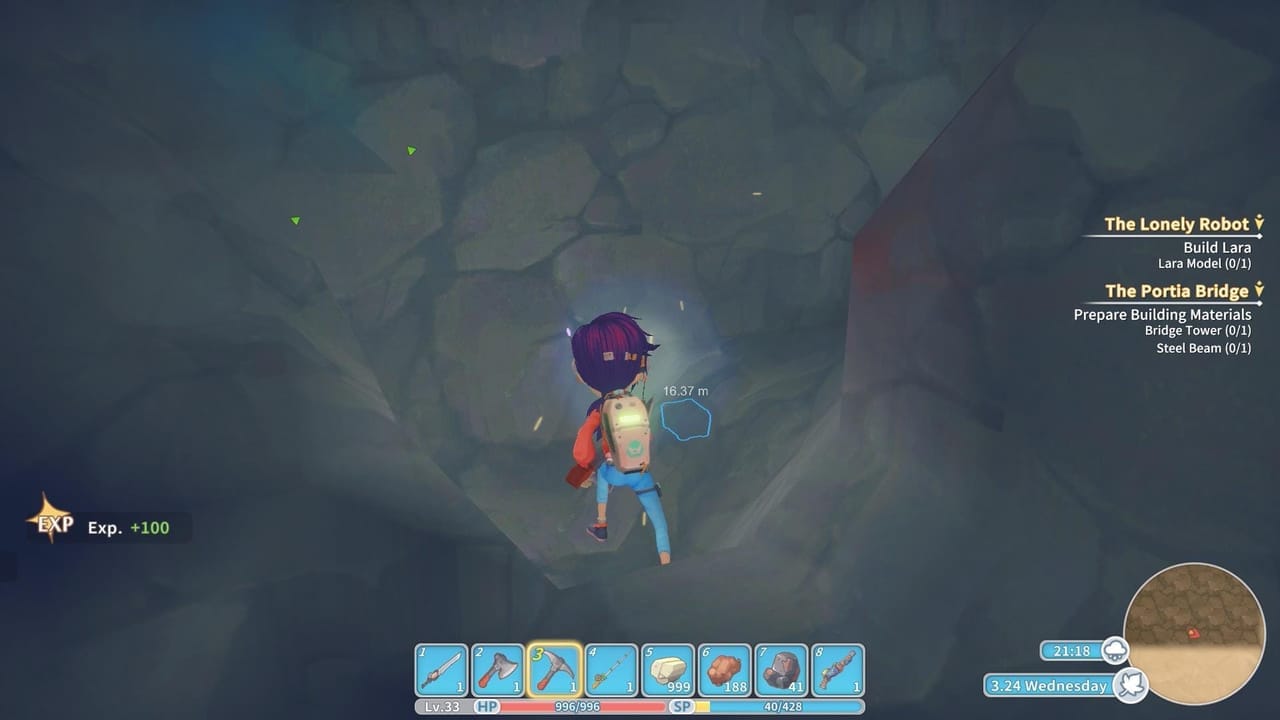
Before your start considering dating, however, you need to become a successful contributor to Portia society. While I’ve mostly been praising My Time at Portia, this is where things start getting frustrating. Resource gathering can be a chore, and I had to rely on the wiki a few times to find out where obscure resources were hiding. Wood is easily the most demanded resource in the game. It’s consistently used in crafting, even as fuel to melt ores in furnaces. The over-reliance on wood can put a damper on gameplay, turning an easy day into one full of killing trees.
Ores are easier to find and gather. You can mine for them in different ruins, which cost a weekly fee to enter. Mining becomes infuriating, sadly, when you’re hunting for resources that aren’t ores, like engines and power chips. These are hidden among relics, which are scattered throughout the ruin. You’re given a scanner to find these items through the stone, but it doesn’t differentiate between resources and relics, which leads to tedium and disappointment. The upgraded scanner alleviates the problem somewhat, but you can't get it until at least halfway through your first year.
Another sore spot for resource gathering comes courtesy of the monster drops. Certain monsters drop specific raw ingredients, and sometimes there isn’t a logical connection for you to make an inferred guess. For example, leather and quality leather comes from a skiver at your workshop. Blue leather only falls when slaying a specific monster. Meanwhile, farming monsters can prove repetitive, especially the ones that are only in dungeons. This tedious design limits the crafting process, which is pretty sluggish to begin with.
The Slowest Furnace on the Planet
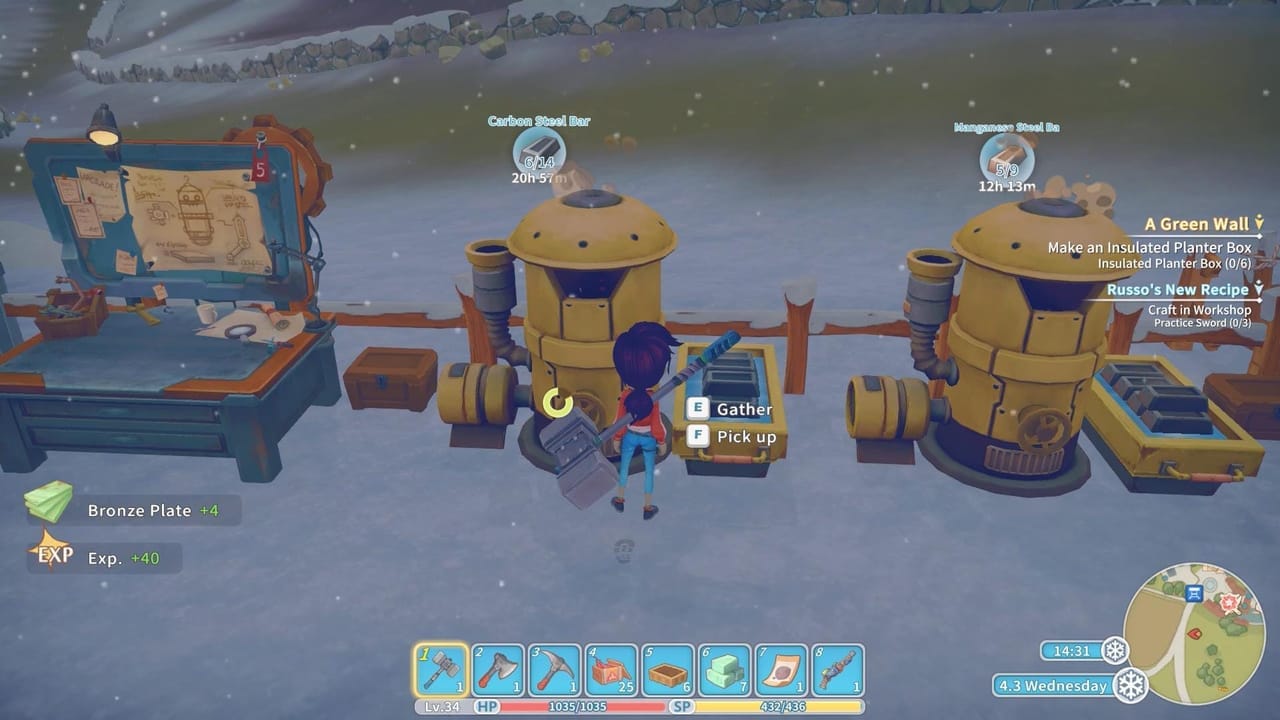
My Time at Portia loves its crafting systems. Certain items are only buildable with corresponding crafting stations. High-end upgraded stations completely change the way you craft items. It’s a convoluted web of ideas saved by some user experience design choices. You often get a checklist of materials to gather, and the workbench has a shortcut to craft your next objective. Most importantly, as long as the necessary materials are in an item box on your property, your crafting stations will conveniently tap into them, saving you some hassle.
This is where the praise for the crafting system stops. The rest of it challenges your enjoyment of the game. Almost every crafting station runs on a timer. Need 10 carbon steel bars? That’s 27 in-game hours or 27 real-world minutes. Then you plug those bars into your cutter to make steel plates, which take around two in-game hours apiece. Oh, but one steel plate needs three bars, so you’d better be smelting even more bars. The cycle is endless, and you can never get ahead of the curve because you’ll never know what to smelt next. Even if you try to create more materials to prepare for whatever’s next, your stations are probably already in use working on the next objective.
Preposterously slow timers mar crafting, enough so that I eventually stopped caring. Some days, I went to bed at 10 a.m. just to make 21 hours pass quickly, completely disregarding the townsfolk or pending quests. It gets worse later in the game when crafting the required number of materials can take days. Sure, that time is useful for gathering resources, but there are times when you just want to finish a commission right now. While the issue could be alleviated with more crafting station, your property only fits so many objects. Additionally, you’d have to put your current project on hold, and more often than not, commissions are on a time limit. The sorest part of My Time at Portia definitely comes from this insufferable waiting game that can only be overlooked for a few hours.
My Time at Portia: Jack of All Trades, Master of One
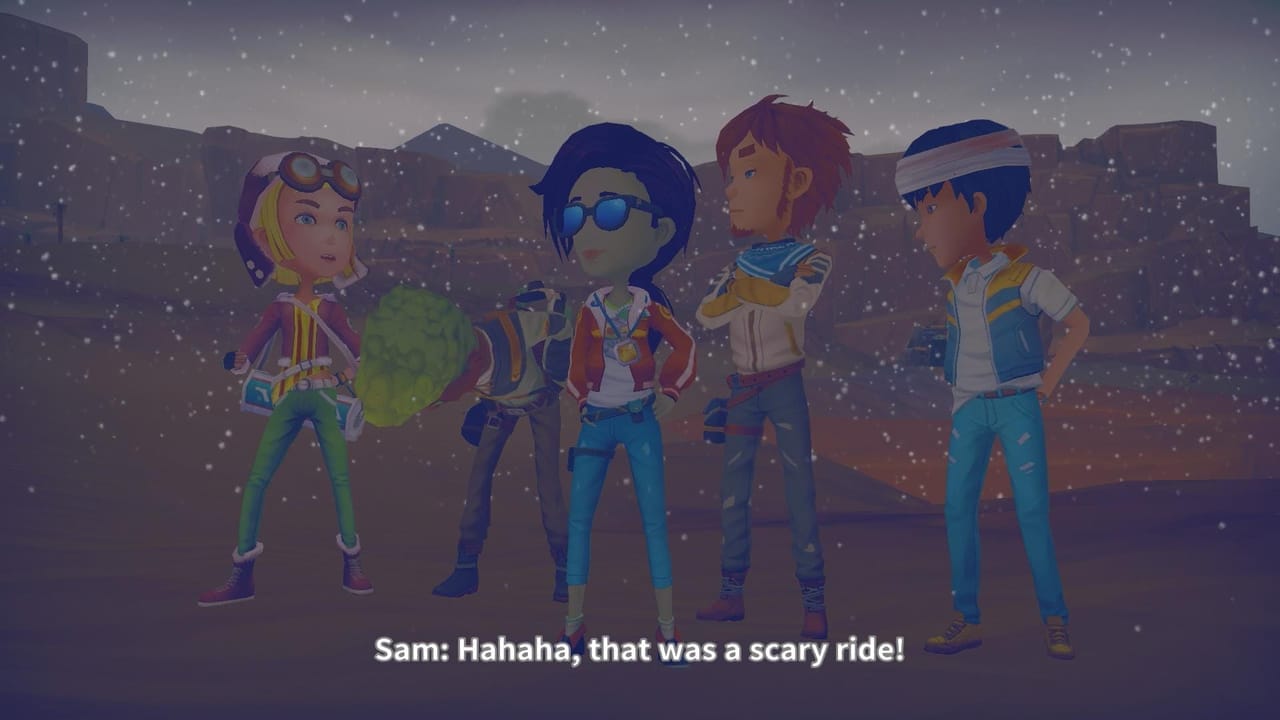
While I’ve focused on the social and crafting aspects of My Time at Portia, you should know the game is packed with a slew of other activities. Every seasonal festival comes with a minigame, most of which are passable. The straightforward combat lacks depth, but it gets the job done. The three skill trees feature helpful passive bonuses as you level up, but none of them are necessarily noteworthy. You can even farm crops, although it’s definitely not as fleshed out as the crafting system.
These mechanics don’t stand out on their own, paling in comparison to the detailed social network and the in-depth crafting system. Yet, everything comes together to propel My Time at Portia higher than it deserves to be. It’s a living example of something worth more than the sum of its parts. The game masterfully executes its portrayal of relationships with the aforementioned cascading friendship system. However, that isn’t to say the rest of what Pathea offers isn’t worth your money. My Time at Portia houses a treasure trove of characters to meet and places to explore, making it one of the best performers in the farming and crafting genre in recent memory.
TechRaptor reviewed My Time at Portia on PC via Epic Games Store with a code provided by Epic Games. The game is also available on PC via Steam, GOG, and Humble. The game is coming to consoles this Spring.
Review Summary
My Time at Portia suffers from arbitrarily long timers in its crafting system, but that's overshadowed by its rustic aesthetic and in-depth social system. For fans of the crafting and farming simulation genre, this is a title worth checking out.
(Review Policy)Pros
- Innovative Social System
- Charming Characters
- Attractive Cartoony Aesthetic
Cons
- Crafting Takes Forever
- Mining Gets Frustrating
Have a tip, or want to point out something we missed? Leave a Comment or e-mail us at tips@techraptor.net
